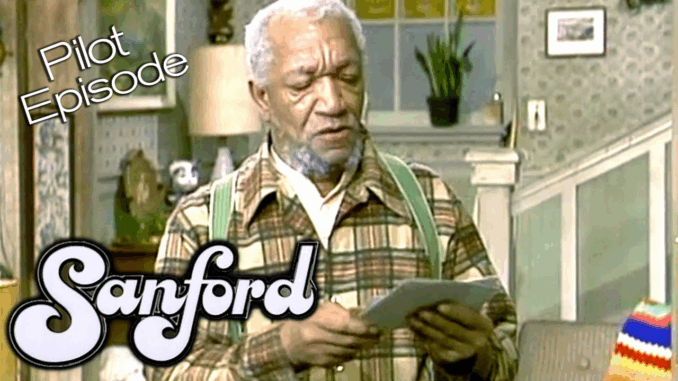
While Sanford and Son is widely celebrated for its groundbreaking humor and portrayal of a working-class Black family, its enduring legacy extends far beyond its comedic brilliance. The show, which ran from 1972 to 1977, was not merely a vehicle for laughs; it was a cultural phenomenon that reshaped television landscapes and, perhaps more subtly, offered a glimpse into the financial shrewdness that underpinned its success. Beneath the piles of junk and the “fake heart attacks” lay a surprisingly robust and influential blueprint for television production and cultural resonance.
One of the most significant impacts of Sanford and Son was its role in normalizing the presence of Black families on television in a way that The Jeffersons later built upon. Unlike earlier, often idealized portrayals, Fred and Lamont Sanford were unapologetically real. They lived in a junkyard in Watts, faced everyday struggles, and had complex, often messy, relationships. This authenticity resonated deeply with audiences and opened doors for more diverse narratives in mainstream media. It showed that comedy didn’t have to shy away from reality to be successful; in fact, embracing it often made the humor richer and more impactful.
Financially, Sanford and Son was a massive success for NBC. Its consistent high ratings, often placing it in the top 10 most-watched shows, made it a cash cow for the network. This success demonstrated the immense market for shows that genuinely reflected the experiences of minority communities, proving that diverse storytelling was not just creatively valuable but also highly profitable. The show’s creators and producers understood the economics of television, leveraging its popularity into syndication deals that continued to generate revenue long after its initial run.
Furthermore, Redd Foxx’s role in the show cemented his status as a comedic icon and, critically, highlighted the power of star talent in driving a series. Foxx’s unique delivery, improvisational skills, and undeniable charisma were central to the show’s appeal. His ability to convey both exasperation and underlying affection, often through subtle gestures and facial expressions, elevated the material and made Fred G. Sanford one of television’s most memorable characters. This demonstrated the immense value of investing in strong, charismatic leads who could carry a show.

The show also contributed significantly to popular culture. Fred’s catchphrases, particularly “You big dummy!” and “It’s the big one! I’m coming to join you, Elizabeth!”, became ingrained in the American lexicon. These lines, often delivered with perfect comedic timing, transcended the show itself, becoming part of everyday vernacular and a shorthand for dramatic exaggeration. The junkyard setting itself became an iconic backdrop, instantly recognizable and synonymous with the show’s blue-collar charm.
Beyond the immediate success, Sanford and Son created a lasting cultural blueprint. It paved the way for subsequent shows that explored diverse family dynamics, social class, and the humor found in everyday struggles. Its legacy is evident in how it’s referenced and celebrated in contemporary media, from shout-outs in rap lyrics to comedic homages in modern sitcoms. It proved that a show about an old man and his son, surrounded by junk, could be a treasure trove of entertainment, social commentary, and enduring cultural influence. Sanford and Son was truly more than just junk; it was a goldmine.
